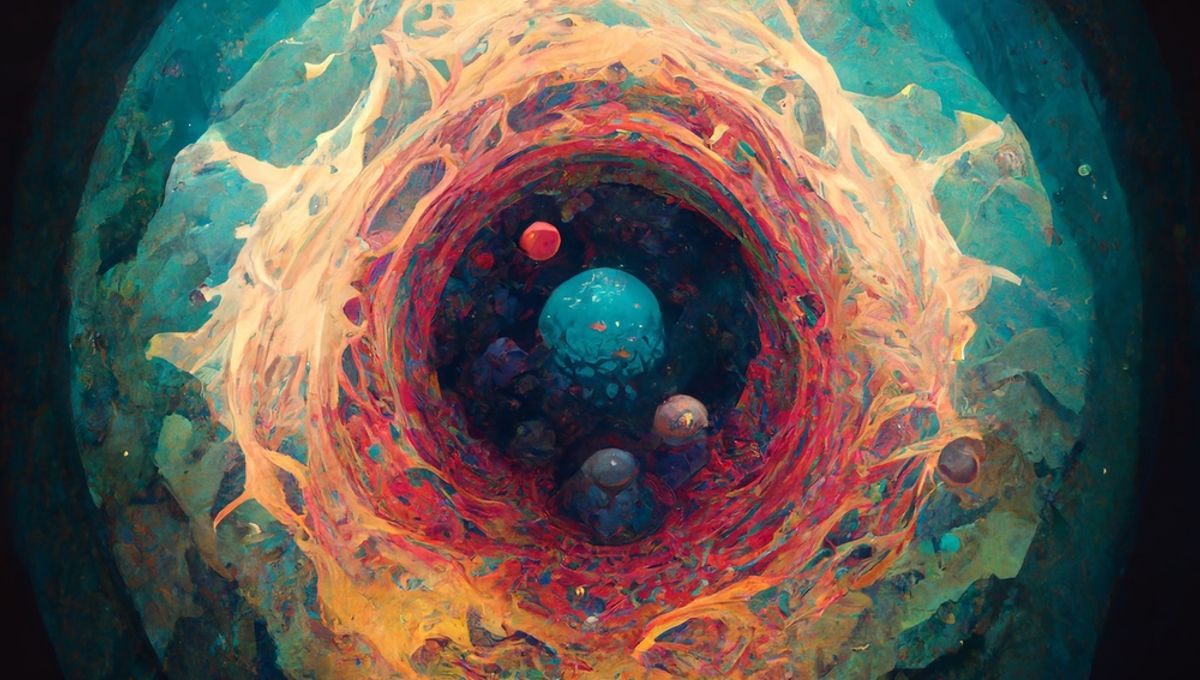
There are six varieties of quarks, including one known as “strange”. However, in the world of the very small, where quantum physics reigns, many things are strange, and arguably charm quarks are stranger still.
Both top and bottom quarks are heavier than charm quarks (in the case of top quarks, dramatically so), but last year, charm quarks were found to flaunt their weight by being a component of protons, despite being heavier than the proton itself. So, what’s their story?
Having discovered that the supposedly uncuttable atoms are instead composed of protons, electrons, and (sometimes) neutrons, physicists then learned that of these, only electrons might be elementary particles. Protons and neutrons are composites instead. Their components usually come in threes, inspiring physicist Murray Gell-Mann to pick the odd-sounding name from the line “Three quarks for Muster Mark” in Finnegan’s Wake.
Originally, three types of quarks, known as “flavors” were envisaged; up, down, and strange. This seemed a good fit for their propensity to hang out in triads, even though the strange quark is much rarer than the others. Protons, we subsequently learned, were composed of two up quarks and one down, while neutrons have two downs and an up.
Even when quarks had only been firmly identified as composing more exotic particles, this somewhat simple picture was shown to be inadequate. For one thing, quarks don’t have to be in threes; mesons are particles made up of just two quarks, and recently we’ve started discovering tetraquarks, made of four.
It soon became clear a fourth quark was required to explain the behavior of the weak nuclear force. Sheldon Glashow and James Bjorken predicted the attributes of this particle and named it the charm quark, helping Glashow win the 1979 Nobel Prize for Physics.
Glashow said the name was because of the “symmetry it brought to the subnuclear world”, balancing the number of known quarks and leptons. He also associated charms with warding off evil. The charm quark prevented particle decays predicted by the three-quark theory, which can look evil to a particle physicist when the timing is bad enough.
A hunt to find proof of the charm quark eventually proved successful. Experiments revealed charm quarks have two-thirds the charge of a proton, and a mass estimated at around 1,275 MeV, compared to 2.3 and 4.8 MeV for the more common up and down quarks. The mass is somewhat debatable, however. Since quarks don’t exist as isolated particles, but as components of other composite particles, their masses cannot be measured directly, and estimates vary. Nevertheless, there is little doubt charm quarks are far heavier than the more common quarks. More relevantly to the strangeness, they’re also more massive than entire protons.
Their large mass, relative to up, down, and even strange quarks, means they are not so easily produced. Nevertheless, the remarkable amounts of energy released when matter and anti-matter particles annihilate each other can produce particles that contain charm quarks, as can the decay of the even more massive W and Z bosons, carriers of the weak nuclear force. In turn, charm quarks can decay to bottom or strange quarks.
Massive as the charm quark is, it has less than a third of the mass of the bottom quark and less than a hundredth of the top quark, each of which were added to the particle zoo after it.
The particles normally made up of charm quarks, such as the D meson, have lifetimes measured in billionths of seconds or less. We don’t get to study them, just identify their presence from the things they break down into.
All this led to a truly mind-bending claim last year. One of the features of particle physics is that some particles nip briefly into existence and out again. Over time this can create a probability of existence, rather than in a definite present/not present state. A particle that is there half the time has a 50 percent probability of being present. It also only contributes 50 percent of its mass to the composite particle it both is and is not within.
For decades, physicists had speculated that in addition to their two up and one down quarks, protons might contain heavier quarks at low probabilities. Last year, a team found evidence for this idea in relation to the charm quark by analyzing proton collisions. The probability is so low, that charm quarks only contribute a tiny proportion of their mass. The consequence is that a proton’s total mass, combining three light quarks, some binding energy, and a small probability of a charm quark, is less than the charm quark – one of its components.
An alternative way of looking at it is that charm quarks and anti-charm quarks fizz into existence very briefly, and then disappear again, but the mass of the proton is consistent over time, including an average of the brief time when the charm quark is there, and the much longer one where it is not.
The whole thing is so bizarre even Dr Juan Rojo, one the physicists who found the evidence, acknowledged it “goes against all common sense”. Discarding common sense is often a requirement when learning about quantum physics, but the charm quark seems to want us to take that to extremes.
Source Link: What Are Charm Quarks And Why Are They So Bizarre?